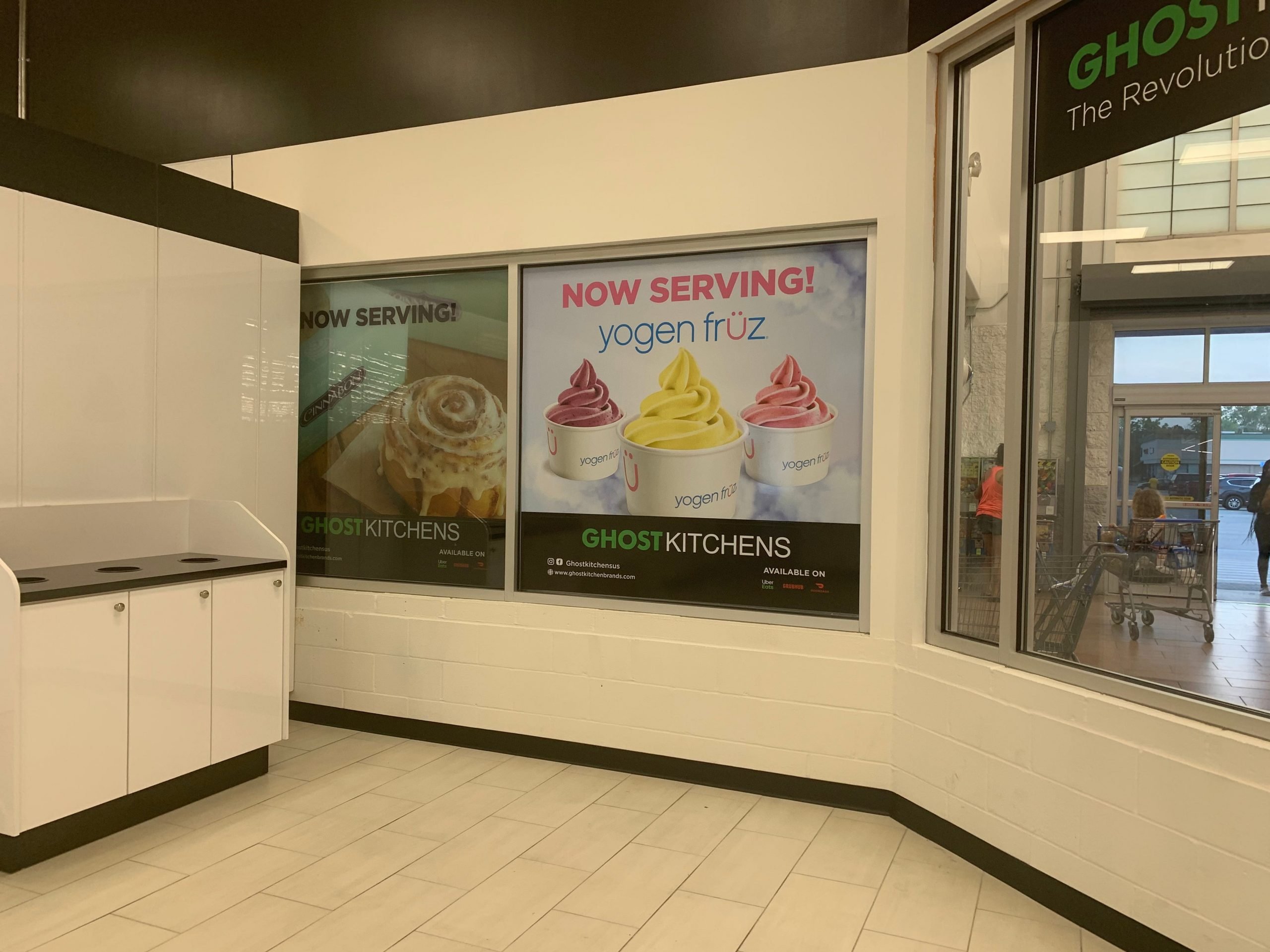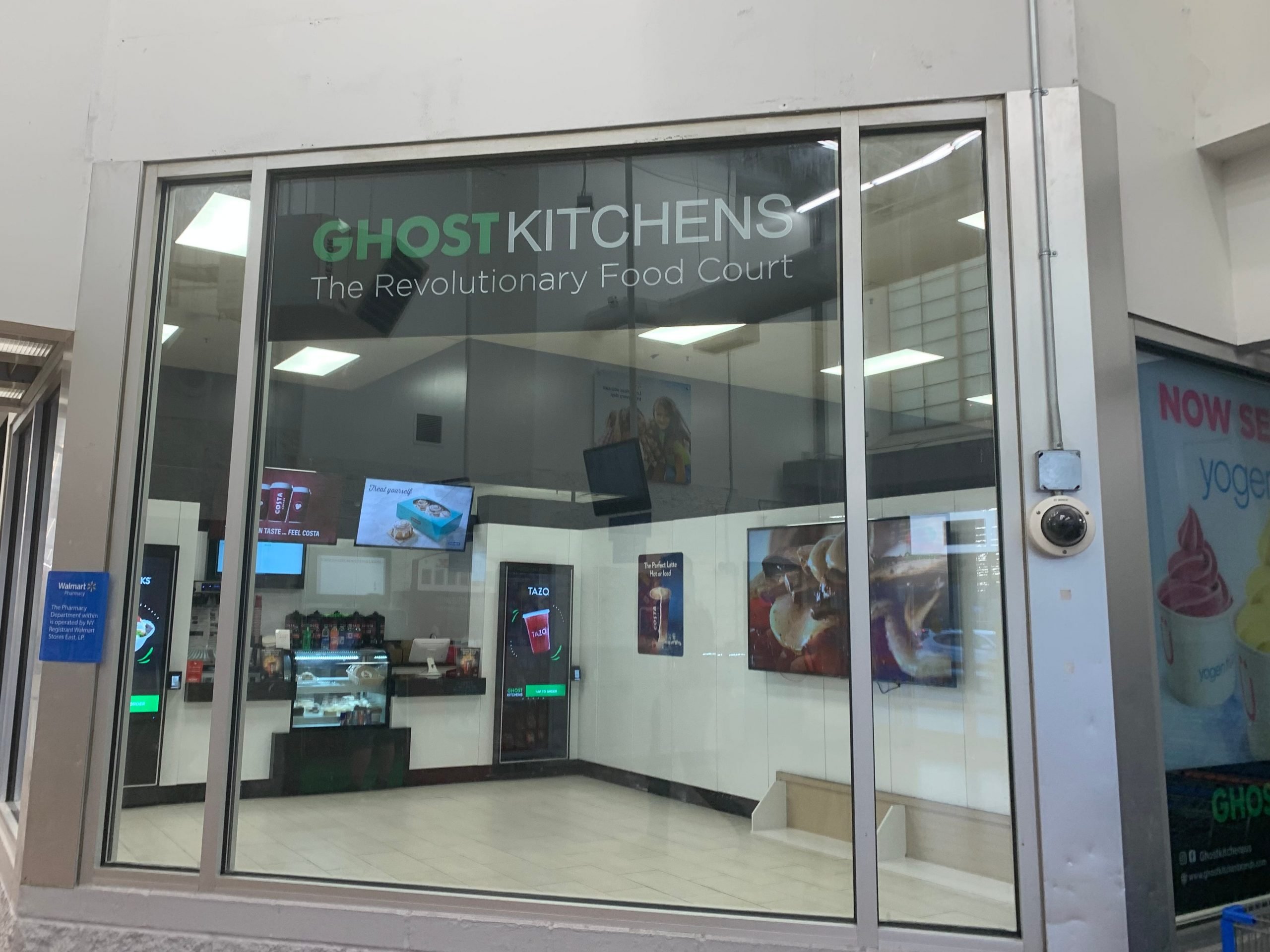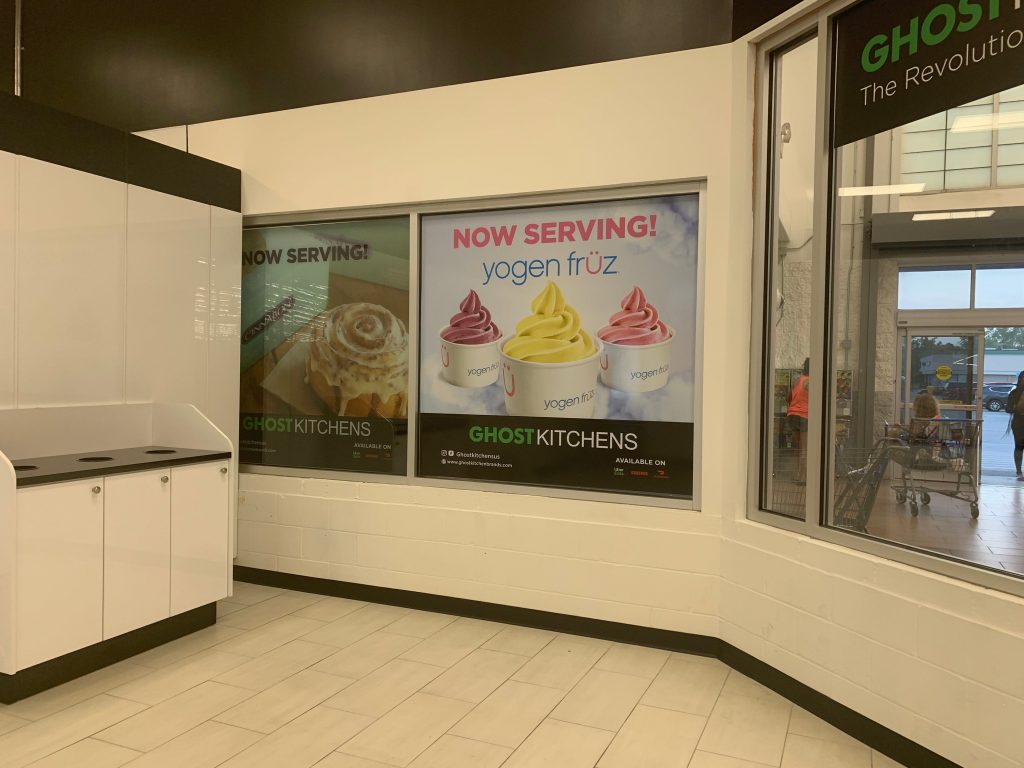
Mary Meisenzahl/Insider
- I visited the first Ghost Kitchens restaurant in a New York Walmart.
- Ghost kitchen companies have exploded over the last year and a half as delivery grew.
- Virtual restaurants cut down on labor and real estate costs, making them appealing to owners.
- See more stories on Insider's business page.
As part of my job as a retail reporter, I eat a lot of fast food. I even do a lot of in-app ordering and contactless pickups, but nothing prepared me for eating in Ghost Kitchens' first Walmart location in Rochester, New York.
The restaurant is basically a large, open space with white walls and little else. A TV cycled through ads for the brands served by Ghost Kitchens, and acted as the focal point simply because there was nothing else, besides a trash can and larger ads on the windows. It was unlike any other restaurant I'd ever been in. In fact, it reminded me of a doctor's office waiting room more than anything else I could think of – though it didn't have seating.
Ghost Kitchens' concept strips a fast food business down to only the most basic elements. Orders are made through large touch screens located throughout the room, requiring no direct interaction between customers and workers. Several dozen brands' worth of menus come out of the same kitchen, which had five workers at the time of my visit. The lack of tables, napkins, condiments, and other things customary at the average McDonald's make it apparent that customers are not meant to linger or eat their food there. That's another way to cut down on costs – workers don't need to dedicate time to cleaning tables, mopping floors, or restocking ketchup.

Mary Meisenzahl/Insider
Ghost kitchens, also known as cloud kitchens or virtual concepts, are only becoming more relevant as several big players compete in the growing sector. Reef Technology, which just signed an agreement to open up 700 ghost kitchens with Wendy's, builds mobile kitchens in parking lots and garages to make food for delivery with fast food partners. It's the largest of these operations in North America, with 5,000 locations.
CloudKitchens, from Uber founder Travis Kalanick, has deals with some well-known brands, including Chick-fil-A, Wingstop, and Noodles and Company. Other competitors, like Kitchen United, All Day Kitchens, and Ghost Kitchen brand, which I visited, are also growing.
Ghost kitchens exploded during the early days of COVID-19, when brands scrambled to set up delivery infrastructure and recoup some of the sales lost by dining room closures. Now, more than a year into a still-raging pandemic, they make sense for a different reason: they don't require as many workers.
Restaurants across the country, from full service to fast food, are having trouble hiring and retaining workers to keep business going. Some Chick-fil-A, Starbucks, McDonald's, Dunkin', and other chain locations have tested out short-term solutions like cutting hours, closing dining rooms, or cutting off service of certain meals. A survey of restaurant operators from the National Restaurant Association found that 78% said that they don't have enough workers to handle business, and 75% said their biggest problem was finding staff.
Market research firm Euromonitor predicts that the ghost kitchen segment could be a $1 trillion industry by 2030.
"Labor savings are no doubt a big benefit driving the growth of this segment," senior analyst at Pitchbook Alex Frederick told Restaurant Dive. But, "brick-and-mortar restaurants have evolved to maximize dine-in floor space and minimize kitchen space in an effort to maximize profits. Most restaurants aren't optimized for delivery," he said.
Do you have a story to share about a retail or restaurant chain? Email this reporter at [email protected].

